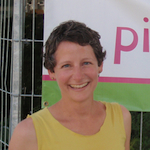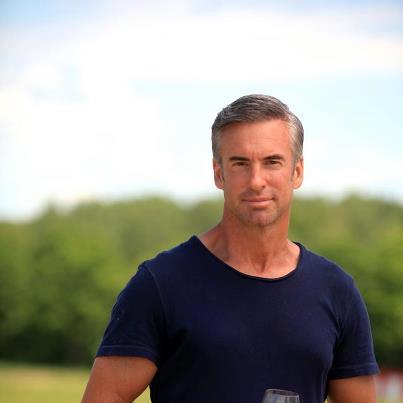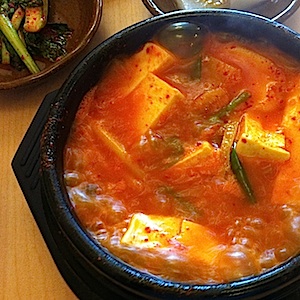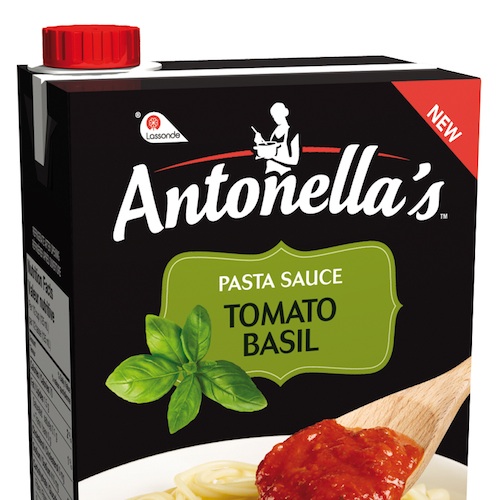by Malcolm Jolley
Lauren Baker is the Executive Director of Sustain Ontario, a not-for-profit organization dedicated to healthy and ecologically responsible food and farming in the province. She’s also the lead author of a new report, commissioned by the Metcalf Foundation, called Menu 2020: Ten Good Food Ideas for Ontario. I caught up with her last week at Coffeehouse on Broadview near her offices south of The Danforth to talk about the report and how the province can bring together its citizens through food. (Full disclosure: I’ve known and been friends with Lauren for many years and Sustain Ontario is a ‘Certified Good Food fighter’).
Malcolm Jolley: This report you’ve written for the Metcalf Foundation [Menu 2020] has gotten a lot of press in the last week. Before we get to it, you’re lead author of it for Sustain Ontario. What exactly is that?
Lauren Baker: We’re a network of groups, farms and food enterprises across the province working towards a food system that’s healthy, local, sustainable, equitable and financially viable. What’s interesting about Sustain Ontario is that we were actually created by farms and food groups who came together because they wanted to really have a voice for showcasing their work but also liaising with policy makers. So, I think of our role as connecting farm and food leaders from across the province and translating their amazing work into policy language that can then be taken up.
MJ: I downloaded my report from the Metcalf Foundation’s website. You’re also connecting with them, right?
LB: Yes. Metcalf catalysed the process from which Sustain Ontario was founded. They fund organizations doing creative work in the farms and food sector as well as social services. Although I think they found that even the organizations they funded in social services were doing interesting things around food and social justice. So, the Metcalf Foundation funded Sustain Ontario – gave us the seed money to get started (basically my salary) and then commissioned a series of reports including this one as a way of bringing the conversation up a notch.
MJ: Is the report kind of road map for policy changes, then?
LB: Yeah. When I set out to write the report, I wanted to provide a new policy framework for food in Ontario. I hadn’t really looked into the provincial level before. What I thought I’d find was lots of policy documents with objectives we wouldn’t agree with. But I actually found the opposite. I found a lot of supportive language in our policies. That’s where I came up with the idea of the ‘Good Food Gaps’: Ontario has all these environmental, social, agricultural and health promotion policies that talk about all the great local food object that we’d like to achieve, but we’re not seeing those initiatives supported on the ground. The fact that farmers can’t make a living and consumers find it difficult to access the kinds of food that they want is what we call a good food gap. These gaps are created by relatively good policies that don’t translate into programs or resources or initiatives that actually close the gap on the ground, for whatever reason.
MJ: So you call the problems “Good Food Gaps” and the solutions “Bridges”.
LB: Yes. We looked at each problem from in terms of food, farming and health. We identify the issue related gap and then the bridge, which is gleaned from examples worldwide – there’s lots of great stuff going on everywhere with food issues. But then we actually “bridge the gap” by speaking to something that’s actually going on here in Ontario. I think the strength of the good food ideas we put forward [in the report] is that they are actually happening already. They not just good ideas, they are practical projects underway on the ground that we’re showcasing.
MJ: That struck me when I read the report. I wondered if you were going to give us some kind of pie-in-the-sky utopian wish list.
LB: Yeah! [Laughs.] We’re not really proposing anything new. We’re just talking about things that already exist and asking for a conversation about how we can scale-up that work. These bridges have really powerful impact on the ground, but all these projects are being done with really minimal resources.
MJ: So, ultimately, is the Premier your target audience?
LB: Well, sure. But part of that question speaks to how you see policy change happen. And part of what we want to do is add to a really robust conversation. There are lots of people talking about his already, and that’s why there has been so much interest in the report. So, we’d like to generate some more public interest around these issues, but we also want to talk to policy makers. So, I guess my dream meeting is with the Premier’s Office. And I also want to talk to Minister [Carol] Mitchell [Agriculture and Rural Affairs] and Minister [Margaret] Best at Health Promotion about how to go forward.
MJ: Let’s go throughout the ten gaps and bridges in the report. The first is “Support Producers of Locally Consumed Fruit, Vegetables and Meats”. What does that mean? Giving them money?
LB: We already give farmers money, and I think this a good thing that stems from our historic value of farmers since they provide food for all of us, which is important for our national food security and for our economy – the farm sector generates over 800,000 just in Ontario. It also creates a beautiful rural landscape. But what we saw when we looked at agricultural policy was there are lots of voices advocating for changes in the way our system manages risk management for farmers.
MJ: What does that mean: “risk management”?
LB: Insurance. It’s a moving floor price, so that if you’re crop fails, you basically get back the costs of your inputs (seeds, fertilizers). There are already some commodities that have that, so we’d like to see equity across the sector so small and diversified farms could be covered too.
MJ: OK, the next one sounds like it’s related, then: “Make Room for New Farmers and Alternative Markets within the Supply-Managed Sytem”.
LB: They are separate, but related. The supply-managed farmers, in very specific commodities are protected. The quota system ensures demand.
MJ: One of the examples you give is chicken farming. Broiler chicken farmers can raise up to 300 for “farm-gate sales”, but the smallest quota they can buy is for 14,000 chickens.
LB: There used to be a big gap between hobby farming and commercial farming, but over the last five to ten years there’s a big group of farmers who are coming up the middle and they can’t get access to markets. We’re seeing farmers who are growing multiple crops, and diversifying into livestock. But if you can only grow 300 chickens, you can’t pay your bills. But if they could raise, say 1,000, it might be financially viable. And, I should say, that these are niche markets – they do not even come close to cutting in on the farmers who are growing on a larger scale. It would be win-win for everyone.
MJ: But I’ve heard the poultry farmers are quite vigilant about policing the quota – that there is actually a sort of ‘chicken police’ that goes around counting birds. Why do they feel so threatened?
LB: I guess my short answer is I don’t know. I’ve talked to the president of the poultry farmers who made a really good point: she said “as farmers we change our practices all the time.” And I thought that was encouraging. And it’s true: farmers have to adapt to the markets and the economic context all the time. But there are some very entrenched institutions, that operate in a certain way and have for a long time. So, I think there is a feeling of threat, for sure. One supply-managed system system that is starting to overcome that is dairy. Now we can have direct sale of milk for artisanal cheeses.
MJ: There are only two licenses in the whole province!
LB: Yes, it’s a pilot project, but it’s encouraging.
MJ: OK, we better keep moving. Good Food Idea number three: “Harvest the Whole Value of Ecological Services from Agriculture”.
LB: The idea is to shape our policies to reflect the multi-functional aspect of agriculture.
MJ: Farmers as stewards of the land?
LB: Yeah: there are multiple benefits and services that come out of agriculture, or there can be. Farmers are one of, if not the, largest land owners in Ontario. They’re already managing a large part of our ecosystem. And our ecosystems are being valued indifferent ways now with climate change, so lets put some of that money into farmers’ hands.
MJ: OK, but it sounds like your next idea, “Plant Urban Ontario” will screw the farmers completely because we’ll just grow all of our food n our backyards!
LB: [Laughs.] You know, people really struggle with the idea of urban agriculture because it seems like a threat to rural agriculture. But that’s completely ludicrous. We need a lot more food than we could ever grow in the city. At the same time, there a whole lot reasons why we should grow some food in the city, and they’re in the report. For me, personally, some of the biggest reasons are: 1) a lot of our new farmers are actually coming to country farms from the city, so we need to provide them a pathway from the city to rural farming; and 2) it’s important to grow food in the city for its educational value. Riverdale Farm provides an essential educational service in downtown Toronto: where else are kids going to see an udder and understand where milk comes from? Or what chickens look like – I know people sometimes scoff at this notion but I think it’s incredibly important that kids learn where their food comes from.
MJ: In the report, you call it ‘food literacy”. Speaking of which, idea number five is “Implement a School Food Program, and Embed Food Literacy in the Curriculum.
LB: There are a number of community groups – maybe thousands – across Ontario working to improve their schools’ food rpgrams. Canada is actually the only G8 country that doesn’t have a national school food program, by the way. So we’d like to see a comprehensive program, that was really supported by the curriculum and was linked to local farmers.
MJ: What would that mean tangibly? A garden in every school? A kitchen in every school?
LB: On the farm side, it would look like the FoodShare program, where local farmers to contribute into regional warehouses and good food could then be distributed directly to local schools. So you create a new economic relationship that benefits kids and farmers. And I think it also means a food literacy program with kitchens and gardens so kids can grow, cook and compost food and understand the whole food cycle. And there are lots of amazing lessons about every subject you can teach to be found in the garden and the kitchen.
MJ: Idea number six is “Support Community Food Centres”. That sounds like The Stop. Regular GFR visitors will be familiar with their model of going beyond a food bank to growing, cooking and creating community programs around food. In fact it’s the only “community food centre” I’ve ever heard of.
LB: Right. I would also consider FoodShare a kind of community food centre too, even though their programs are city-wide. And there are actually other ones around the province. But the The Stop is pretty special and the way they provide all these different food programs, from emergency distribution to education, is pretty fabulous. So the The Stop is looking to create other pilot projects across the province, which we support.
MJ: When I look at what’s happening at the Evergreen Brick Works, it looks like we’re about to get the next big food-driven public space in Toronto, after the Green Barn. I’m beginning to think that every neighbourhood and town is going to want one.
LB: Yeah! I think of the Region of Waterloo who have been doing these things really well out of their health unit – amazing food programs around community gardens, community kitchens and farmers markets. It’s often not worth it for farmers to come into low-income neighbourhoods, but like FoodShare, they can buy directly from farmers and sell to these neighbourhoods at the same price. And they’re seeing the consumption of fresh fruit and vegetables on the rise as well as the farmscape actually changing: more green houses and market gardens in Waterloo Region because of these programs.
MJ: OK, the next idea is “Establish Local Food Infrastructure through Regional Clusters”. What does that mean?
LB: We are losing the infrastructure to process local fruits and vegetables in Ontario as well as meat.
MJ: There’s a lot of buzz I have been hearing about “small-scale abattoirs” does that fit in? Or is this about the last cannery that shut in Niagara?
LB: Yes. All of the above. We tend to think of infrastructure as “hard” facilities where food is canned, frozen or dried. There’s also what we call “primary processing”. For instance, if you make jam commercially, you don’t want fresh strawberries, you want pales of frozen fruit, or maybe a concentrate. So, right now, what happens when small operations grow to a certain size is they don’t have the facilities to keep going. I was just at a meeting in Elmwood, Ontario about the abattoir issue. It’s a huge crisis. When we lose small abattoirs, people actually stop raising livestock and it changes the farm landscape.
MJ: Just at the point when more and more consumers are interested in sustainably raised meat there will be none to be had.
LB: Exactly.
MJ: What’s the policy fix for that?
LB: What we’re asking for are policies that fine-tune regulations to the scale of facilities. They need to meet the same safety standards as the big processors, but the way they do could be different. One farmer, who spoke at Elmwood, had a great analogy for this. He called [the current regulations] like doing fine woodworking with a sledgehammer.
MJ: Idea number eight is “Expand Public Procurement of Local, Sustainably Produced Food”. Is that schools and hospitals?
LB: Every institutional buyer. The group we highlight is Local Food Plus, which is contracting with big institutional food buyers and connecting them with local, sustainable farmers.
MJ: It’s pretty amazing that Ontario government funded institutions, like hospitals, aren’t serving food grown in Ontario. It seems like a no-brainer, doesn’t it?
LB: Yup. There are procurement policies inlace that favour local suppliers in other procurement areas. We think those policies should include food too. And, I am happy to say, this may be a case where it’s coming down the pipe. We’ve heard of ministries trying to come-up with ways to link their supply chains with local growers.
MJ: Well, it just seems to make sense. The next good food idea also seems to make sense: “Link Good Food with Good Health”. Isn’t it?
LB: This is one of the most general, but most important recommendations. What we found was that public health units, especially, are doing great things to link food and health and they’re shifting resources to support local farms. The Stop is another great example of this. But, again, it’s happening with shoe-string budgets. We spend billions of dollars on healthcare treatment instead of prevention and health promotion. The research is really strong that if people eat good food, they’re going to be healthy.
MJ: Uh, yeah. That seems pretty basic.
LB: [Laughs.] Yup, it’s pretty basic. But it’s amazing when you see what kids eat at school, or how little fresh fruits and vegetables are available in many neighbourhoods – it makes you wonder. Especially, in low-income areas.
MJ: Sometimes I think high-income neighbourhoods aren’t much better.
LB: We did some analysis up in Jane-Finch. It was shocking. I think we found five food outlets. Three of them were ethno-cultural grocers, which are important and tend to have canned stuff that’s really good, but their fresh stuff was awful And then there was a place that you had to drive to and a No-Frills. But in downtown Toronto, in the Danforth, we found something like 40 choices for healthy food. But it’s true that although we target to low-income areas, the statistics say we all need to eat better. It’s a universal program that has to happen. And that means better up-take. Universal programs always work better when it comes to improving things.
MJ: So that they impact the breadth of society?
LB: Yeah, and for someone with a decent income like me, you can tax it back. If we all had a card that helped me shop at farmers markets, or something like that, we would all probably do it, right?
MJ: The last idea, “Plan for the Future of Farming and Food” is directed at land use.
LB: We mean community planning on all levels. Planning policies all talk about food and farming, but often the language is vague. Often farmland preservation is ignored at the expense of development. So we’d like to see stronger language.
MJ: How’s that going? What about the Greenbelt?
LB: The development pressures are really focussed now on the “whitebelt” which are the areas just outside of the Greenbelt. So we need to take care ofthat farmland. Also, within the Greenbelt, regional governments could do a lot towards interpreting the language of their policies and by-laws with farms in mind. It comes down to valuing all of the work and contributions that farms make and the province may have to help out municipalities with that. So there’s support to farms, and then there’s support to communities.
Download Menu 2020: Ten Good Food Ideas for Ontario here. And find out more about Sustain Ontario at sustainontario.org.
Malcolm Jolley is the Managing Editor of Good food Revolution.








